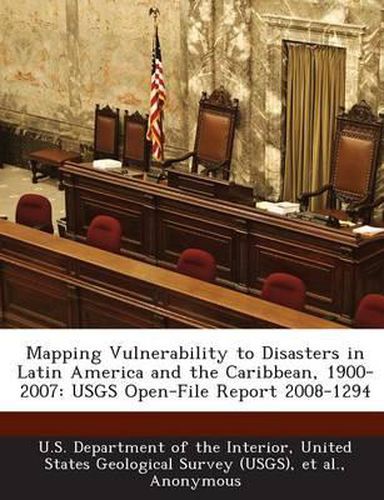Readings Newsletter
Become a Readings Member to make your shopping experience even easier.
Sign in or sign up for free!
You’re not far away from qualifying for FREE standard shipping within Australia
You’ve qualified for FREE standard shipping within Australia
The cart is loading…






The vulnerability of a population and its infrastructure to disastrous events is a factor of both the probability of a hazardous event occurring and the community’s ability to cope with the resulting impacts. Therefore, the ability to accurately identify vulnerable populations and places in order to prepare for future hazards is of critical importance for disaster mitigation programs. This project created maps of higher spatial resolution of vulnerability to disaster in Latin America and the Caribbean from 1900 to 2007 by mapping disaster data by first-level administrative boundaries with the objective of identifying geographic trends in regional occurrences of disasters and vulnerable populations. The method of mapping by administrative level is an improvement on displaying and analyzing disasters at the country level and shows the relative intensity of vulnerability within and between countries in the region. Disaster mapping at the country level produces only a basic view of which countries experience various types of natural disasters. Through disaggregation, the data show which geographic areas of these countries, including populated areas, are historically most susceptible to different hazard types.
$9.00 standard shipping within Australia
FREE standard shipping within Australia for orders over $100.00
Express & International shipping calculated at checkout
The vulnerability of a population and its infrastructure to disastrous events is a factor of both the probability of a hazardous event occurring and the community’s ability to cope with the resulting impacts. Therefore, the ability to accurately identify vulnerable populations and places in order to prepare for future hazards is of critical importance for disaster mitigation programs. This project created maps of higher spatial resolution of vulnerability to disaster in Latin America and the Caribbean from 1900 to 2007 by mapping disaster data by first-level administrative boundaries with the objective of identifying geographic trends in regional occurrences of disasters and vulnerable populations. The method of mapping by administrative level is an improvement on displaying and analyzing disasters at the country level and shows the relative intensity of vulnerability within and between countries in the region. Disaster mapping at the country level produces only a basic view of which countries experience various types of natural disasters. Through disaggregation, the data show which geographic areas of these countries, including populated areas, are historically most susceptible to different hazard types.